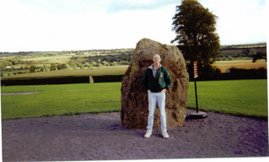Tuesday, February 28, 2006
Lost Civilization Uncovered in Indonesia?
A team of scientists has found what it believes to be the remnants of a lost Indonesian civilization that was wiped out by a catastrophic volcanic eruption in 1815. Yahoo News AP wire excerpt:
NARRAGANSETT, R.I. - Scientists have found what they believe are traces of the lost Indonesian civilization of Tambora, which was wiped out in 1815 by the biggest volcanic eruption in recorded history.
Mount Tambora's cataclysmic eruption on April 10, 1815, buried the inhabitants of Sumbawa Island under searing ash, gas and rock and is blamed for an estimated 88,000 deaths. The eruption was at least four times more powerful than Mount Krakatoa's in 1883.
Guided by ground-penetrating radar, U.S. and Indonesian researchers recently dug in a gully where locals had found ceramics and bones. They unearthed the remains of a thatch house, pottery, bronze and the carbonized bones of two people, all in a layer of sediment dating to the eruption.
University of Rhode Island volcanologist Haraldur Sigurdsson, the leader of the expedition, estimated that 10,000 people lived in the town when the volcano erupted in a blast that dwarfed the one that buried the Roman town of Pompeii.
The eruption shot 400 million tons of sulfuric gases into the atmosphere, causing global cooling and creating what historians call "The Year Without a Summer." Farms in Maine suffered crop-killing frosts in June, July and August. In France and Germany, grape and corn crops died, or the harvests were delayed.
The civilization on Sumbawa Island has intrigued researchers ever since Dutch and British explorers visited in the early 1800s and were surprised to hear a language that did not sound like any other spoken in Indonesia, Sigurdsson said. Some scholars believe the language more closely resembled those spoken in Indochina. But not long after Westerners first encountered Tambora, the society was destroyed.
"The explosion wiped out the language. That's how big it was," Sigurdsson said. "But we're trying to get these people to speak again, by digging."
The big question, to me at least, is how did a people whose language was similar to those spoken in Indochina get to Sumbawa Island? A good bet would be that they sailed there. Men like Thor Heyerdahl have demonstrated that ancient navigation wasn't just a possibility, it was pretty much a certainty. So the next biggest question would be, were these people descendants of the ancient navigators who criss-crossed the South Pacific, or were they more recent immigrants who came there before the age of European exploration? The answer will be an interesting one either way.
Full Story
Subscribe to:
Post Comments (Atom)

No comments:
Post a Comment